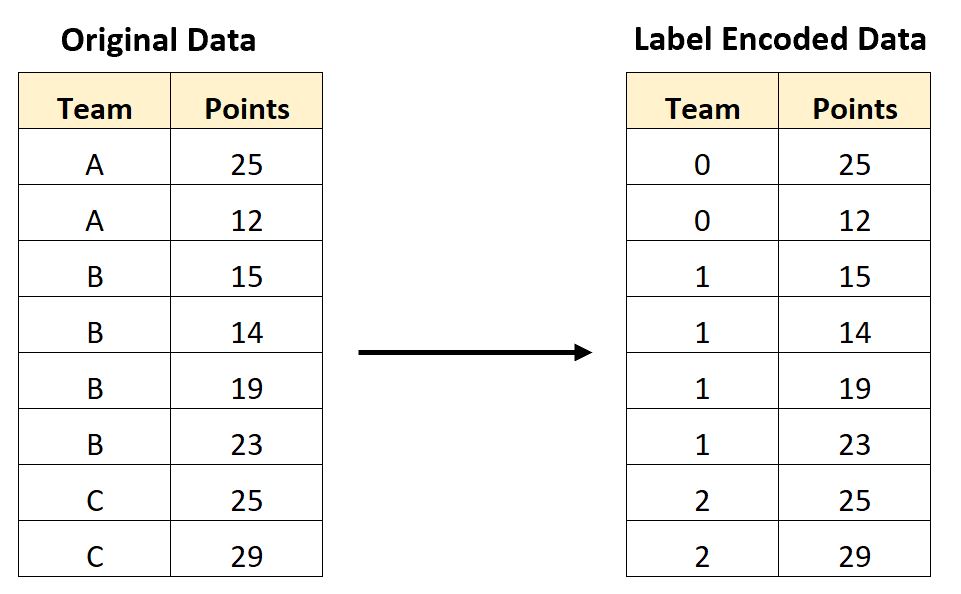Often in machine learning, we want to convert categorical variables into some type of numeric format that can be readily used by algorithms.
One way to do this is through label encoding, which assigns each categorical value an integer value based on alphabetical order.
For example, the following screenshot shows how to convert each unique value in a categorical variable called Team into an integer value based on alphabetical order:
You can use the following syntax to perform label encoding in Python:
from sklearn.preprocessing import LabelEncoder #create instance of label encoder lab = LabelEncoder() #perform label encoding on 'team' column df['my_column'] = lab.fit_transform(df['my_column'])
The following example shows how to use this syntax in practice.
Example: Label Encoding in Python
Suppose we have the following pandas DataFrame:
import pandas as pd
#create DataFrame
df = pd.DataFrame({'team': ['A', 'A', 'B', 'B', 'B', 'B', 'C', 'C'],
'points': [25, 12, 15, 14, 19, 23, 25, 29]})
#view DataFrame
print(df)
team points
0 A 25
1 A 12
2 B 15
3 B 14
4 B 19
5 B 23
6 C 25
7 C 29
We can use the following code to perform label encoding to convert each categorical value in the team column into an integer value:
from sklearn.preprocessing import LabelEncoder #create instance of label encoder lab = LabelEncoder() #perform label encoding on 'team' column df['team'] = lab.fit_transform(df['team']) #view updated DataFrame print(df) team points 0 0 25 1 0 12 2 1 15 3 1 14 4 1 19 5 1 23 6 2 25 7 2 29
From the output we can see:
- Each “A” value has been converted to 0.
- Each “B” value has been converted to 1.
- Each “C” value has been converted to 2.
Note that you can also use the inverse_transform() function to obtain the original values from the team column:
#display original team labels lab.inverse_transform(df['team']) array(['A', 'A', 'B', 'B', 'B', 'B', 'C', 'C'], dtype=object)
Additional Resources
The following tutorials explain how to perform other common tasks in Python:
How to Convert Categorical Variable to Numeric in Pandas
How to Convert Boolean Values to Integer Values in Pandas
How to Use factorize() to Encode Strings as Numbers in Pandas




